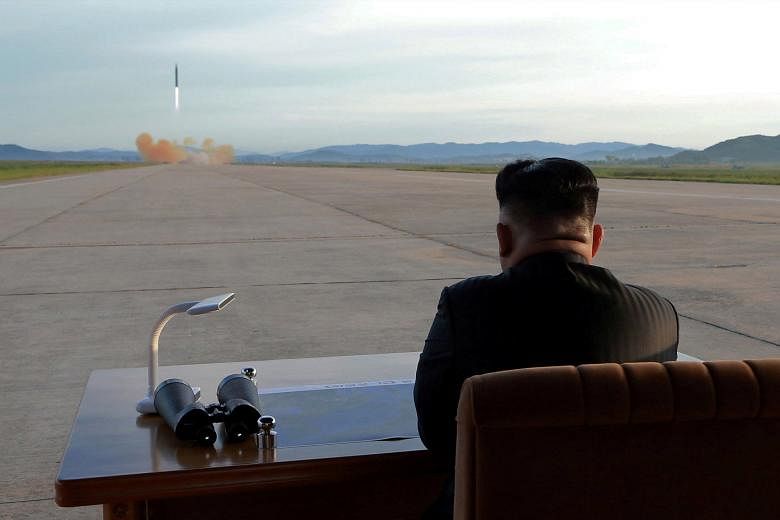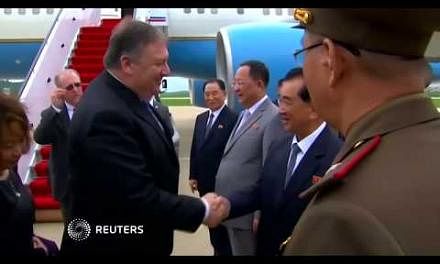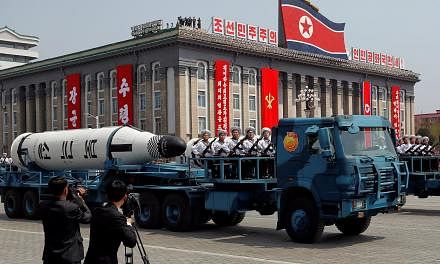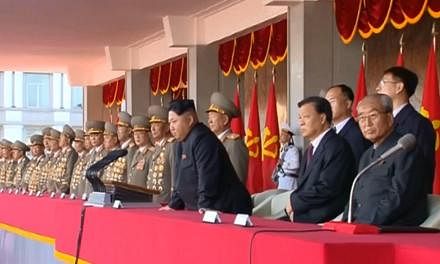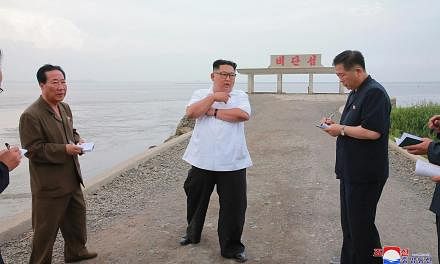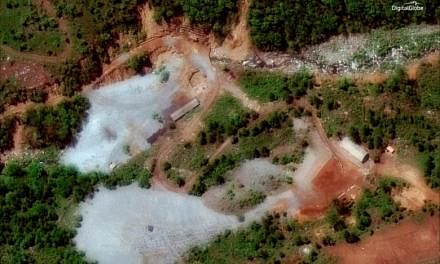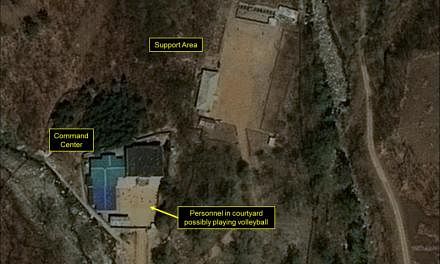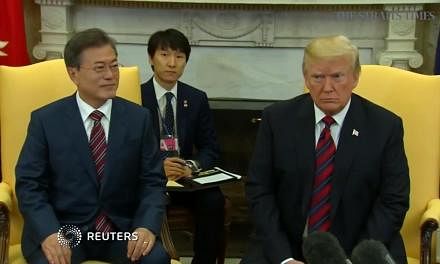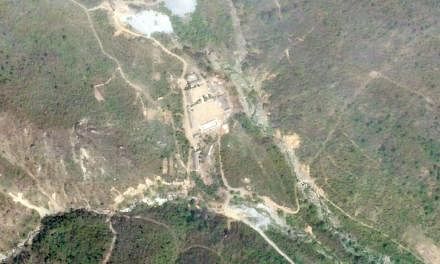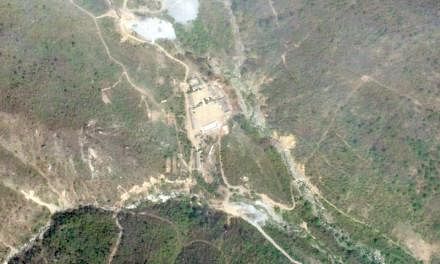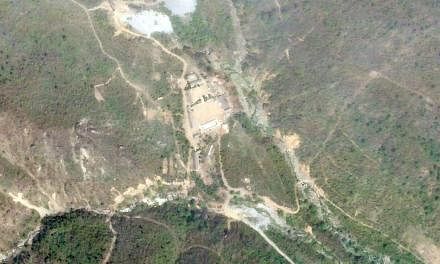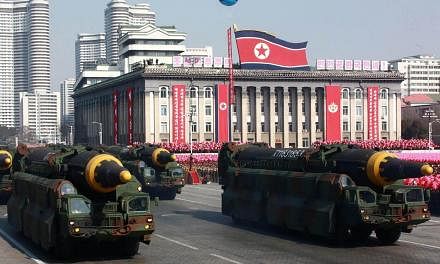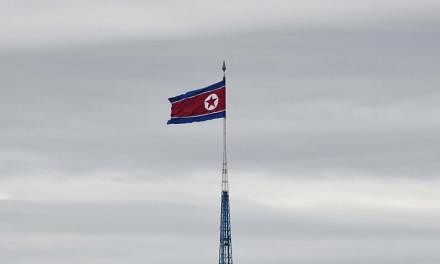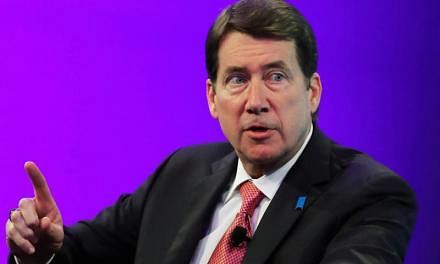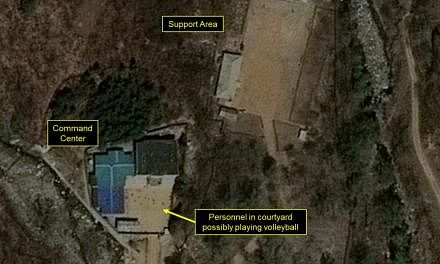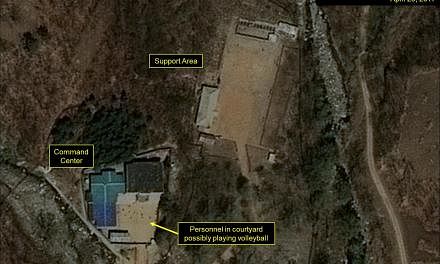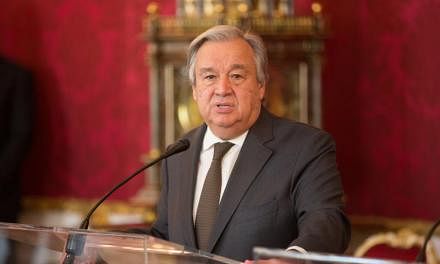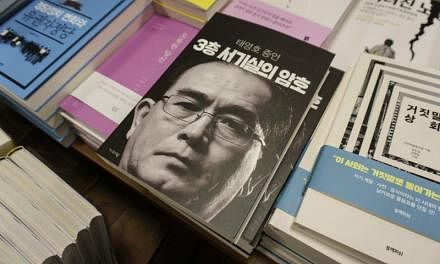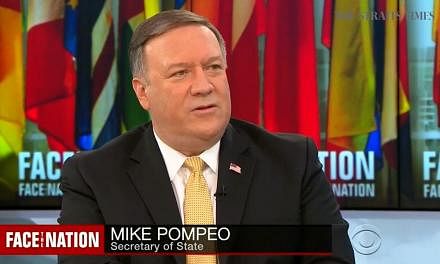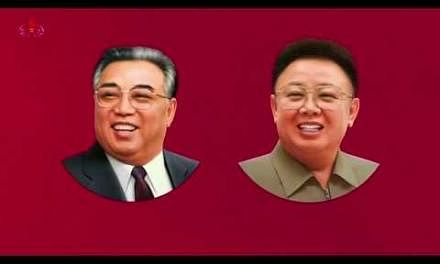WASHINGTON (NYTIMES) - When North Korea launched long-range missiles this summer, and again on Friday (Sept 15), demonstrating its ability to strike Guam and perhaps the US mainland, it powered the weapons with a rare, potent rocket fuel that US intelligence agencies believe initially came from China and Russia.
The US government is scrambling to determine whether those two countries are still providing the ingredients for the highly volatile fuel and, if so, whether North Korea's supply can be interrupted, either through sanctions or sabotage.
Among those who study the issue, there is a growing belief that the United States should focus on the fuel, either to halt it, if possible, or to take advantage of its volatile properties to slow the North's programme.
But it may well be too late. Intelligence officials believe that the North's programme has advanced to the point where it is no longer as reliant on outside suppliers, and that it may itself be making the deadly fuel, known as UDMH. UDMH is short for unsymmetrical dimethyl hydrazine.
Despite a long record of intelligence warnings that the North was acquiring both forceful missile engines and the fuel to power them, there is no evidence that Washington has ever moved with urgency to cut off Pyongyang's access to the rare propellant.
Classified memos from both the George W. Bush and Obama administrations laid out, with what turned out to be prescient clarity, how the North's pursuit of the highly potent fuel would enable it to develop missiles that could strike almost anywhere in the continental United States.
In response to inquiries from The New York Times, Mr Timothy Barrett, a spokesman for the director of national intelligence, said that "based on North Korea's demonstrated science and technological capabilities - coupled with the priority Pyongyang places on missile programmes - North Korea probably is capable of producing UDMH domestically".
Some experts are sceptical that the North has succeeded in domestic production, given the great difficulty of making and using the highly poisonous fuel, which in far more technically advanced nations has led to giant explosions of missiles and factories.
In public, at least, the Trump administration has been far more focused on ordinary fuels - the oil and gas used to heat homes and power vehicles. The United States has pushed to cut off those supplies to the North, but it settled last week for modest cutbacks under a United Nations resolution.
Nonetheless, on Sunday, the president made a case that those sanctions were having an effect. He wrote on Twitter that he had spoken with South Korea's President, Mr Moon Jae In, and tossed out a new nickname for the North's leader, Mr Kim Jong Un.
"Asked him how Rocket Man is doing," President Donald Trump wrote. "Long gas lines forming in North Korea. Too bad!"
But inside the intelligence agencies and among a few on Capitol Hill who have studied the matter, UDMH is a source of fascination and seen as a natural target for the US effort to halt Kim's missile programme.
"If North Korea does not have UDMH, it cannot threaten the United States, it's as simple as that," said Senator Edward J. Markey, a Massachusetts Democrat who sits on the Senate Foreign Relations Committee. "These are the issues that the US intelligence community has to answer: from which countries they receive the fuel - it's probably China - and whether North Korea has a stockpile and how big it is."
Today, the chemical is made primarily by China, a few European nations and Russia, which calls it the devil's venom. Russia only recently resumed production of the fuel, after Western supplies were cut off over its annexation of Crimea.
But the Russians are leery of the propellant: It triggered the worst disaster of the Space Age, in 1960, when scores of Soviet workers and spectators died during a test firing of one of Moscow's early intercontinental ballistic missiles.
The United States no longer produces the fuel - Nasa warned of its toxic and explosive dangers as early as 1966, producing a video that opens with a spectacular explosion.
Long ago, the US nuclear fleet turned to more stable solid fuels, a move the North Koreans are now trying to replicate. But it may be a decade, experts say, before the North masters that technology to power intercontinental missiles.
The White House and US intelligence agencies declined to answer questions about what, if anything, they were doing to cut off North Korea's supplies, citing the highly classified nature of their effort to disrupt the North Korean missile programme. Those efforts have included cyber attacks authorised by President Barack Obama in 2014.
But in interviews with four senior US officials who served as the North advanced its programme, none could recall any specific discussion of how to disrupt North Korea's access to the one fuel that now powers its long-range missiles.
All four said that while there were wide-ranging discussions about how to penalise the North, they could not remember any that focused specifically on the propellant.
Twice - in 2012 and 2014 - the fuel was included in UN Security Council lists of prohibited export items. Experts say few paid attention to that fine print.
"All sorts of things banned for export to North Korea find their way in," said Mr Vann H. Van Diepen, a former State Department official who was at the centre of many US efforts to control the spread of weapons of mass destruction.
But the public and involuntarily public record of US efforts to track North Korea's progress shows a growing concern dating back a decade that the North was obtaining Russian-designed engines to power its missiles, and the fuel to pour into them.
A memo designated "secret" and signed in October 2008 by Ms Condoleezza Rice, then the secretary of state, warned allies that the North had obtained an engine powered by UDMH that "represents a substantial advance in North Korea's liquid propellant technology", adding that it "allows North Korea to build even longer-range missiles".
The memo, which was included in documents later released by WikiLeaks, was evidence of early efforts to get countries that had signed the Missile Technology Control Regime to keep such technologies out of the hands of North Korea, Iran and other nations.
When Mrs Hillary Clinton succeeded Ms Rice in 2009, she issued a similar warning. "North Korea's next goal may be to develop a mobile ICBM that would be capable of threatening targets around the world," she wrote to member states in the missile control group.
The missile launch that took place on Friday, in which the projectile was lofted over northern Japan, was from one of those mobile launchers, fuelled by UDMH, spy satellites showed.
The North's growing dependency on the fuel was reinforced after a military parade in late 2010, when Pyongyang unveiled an intermediate-range missile known as the Musudan. Most of its flight tests failed, some in enormous fireballs.
Federal officials, congressional aides and rocket scientists say emerging clues suggest that, over the years, Pyongyang obtained the fuel, its precursors, its secret formula and its manufacturing gear from China, the North's main trading partner.
Beijing still uses UDMH to loft satellites and warheads and has long exported the toxic substance around the globe.
China has always denied aiding North Korea's missile programme, and the fuel is included on a 15-year-old list of missile-related materials that Beijing has put on an export control list.
But a US intelligence report from 2008 that was included in the WikiLeaks disclosures found evidence of an "uneven track record in enforcing its missile-related export controls".
One senior administration official acknowledged that, as a matter of politics, winning a specific ban on the fuel should not be difficult.
While cutting off access to oil would raise fears of a humanitarian disaster as 25 million North Koreans freeze through the winter, the missile fuel is not a petroleum product, instead being made from a family of chemicals used in high explosives.
The question now is whether the North Koreans have developed their own capabilities to produce the fuel. Given the country's determination - and success - in proving it could launch a nuclear attack on the United States, experts believe it is just another hurdle to be surmounted.
Mr Eckhart W. Schmidt, who has written a two-volume textbook on fuels like UDMH and toured fuel plants around the globe, said his own judgment was that North Korea could learn how to achieve industrial production "if the supply from China or Russia is cut off".
Mr Van Diepen, the former State Department official, said that in the quarter-century that the North Koreans have worked on increasingly sophisticated missiles, they have gone through many stages of foreign assistance in obtaining the fuel, the precursors, the formula and the manufacturing gear.
He said the North was likely to have achieved some ability to make the volatile fuel - even if that resulted in occasional tragedies.
"My guess," Mr Van Diepen said, "is that the North Korean tolerance for casualties is probably pretty high."
